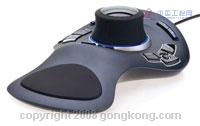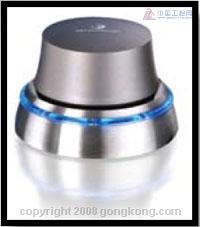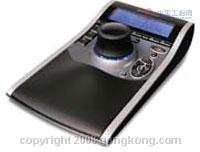GettingMoreFromCAMandCNCSoftware(从CAM和CNC软件得到更多好处) 点击:204 | 回复:0
Larry Haftl
03/25/2008

Space Explorer

Space Traveler

Space Pilot
--------------------------------------------------------------------------------
The single, most costeffective productivity improvement tool available to machine shops today is CNC-related software. Software makes hardware happen.
A CNC mill or lathe is just a pile of metal and wires until the g-code – the software – begins to drive it. Therefore, any improvement in the software that runs a machine will have a direct improvement in the productivity of that machine.
But what is a software ‘improvement’?
If a change to a CNC program reduces the amount of time it takes to machine a part while maintaining the same quality, then that is a software improvement.
If a software change improves machining quality without taking longer to produce the part then that too is a software improvement.
Being able to develop software that will machine more complex parts is an improvement.
And, being able to develop reliable software more quickly is an improvement.
The question is: What does it take to achieve those kinds of improvements?
The answer is: Better software tools and programmer training.
According to the 2007 American Machinist Benchmarking Survey, 80 percent of the leading machine shops use Computer Aided Manufacturing (CAM) software, while only 62 percent of all other shops do.
Those numbers tell us two interesting facts:
The first is that it may be possible to run a leading machine shop without using a CAM software package. A full 20 percent of the leading shops indicated that they do not use CAM software.
The second is that leading shops are almost 20 percent more likely to use a CAM package.
The CAM software that is best for any given shop depends on the type of machining the shop does and the programming resources that are available to it.
Shops that are doing mold and die work are likely to use CAM packages that are solids oriented, single solution, core/cavity optimized and emphasize automated plate machining.
Shops that do general production usually have general and advanced requirements that include solids integration and general automation.
Choosing the right package takes time and experience, but one thing is true for all CAM packages —the highest productivity comes from using the most current release.
The CAM software market is vibrant and active, and has more than 15 major developers who are actively competing for a finite number of “seats” (copies of the software).
These companies are improving their products continuously to remain, or to become more competitive. In addition to having a large staff of program developers, they also have access to the experience of their existing customers, and a look at what their competitors are doing.
The result is a steady flow of rapidly improving software, and while no one likes to spend time learning the twists and turns of a new release, the time spent on such learning inevitably has a good payback.
In addition to staying current with the latest release of whatever CAM package is being used, getting on-going training for programmers also has a high return.
Here again, the 2007 American Machinist
- 日光灯关掉后,灯管两端仍然有...
 [2286]
[2286] - 日本的惊人秘密!!转
 [2850]
[2850] - 电气自动化专业英语教材
 [2340]
[2340] - S7-200 CPU的通信口通信指南
 [2049]
[2049] - 跟着关工学通讯:半双工串口通...
 [4321]
[4321] - 【5.11更新】2022待答疑帖,期待...
 [18157]
[18157] - 学习PLC的请进入
 [2497]
[2497] - 三菱触摸屏配方应用
 [1825]
[1825] - PLC工程师现场安装工作手册
 [3228]
[3228] - plc编程初级入门需要学习的
 [2733]
[2733]

官方公众号

智造工程师
-

 客服
客服

-

 小程序
小程序

-

 公众号
公众号

















 工控网智造工程师好文精选
工控网智造工程师好文精选
